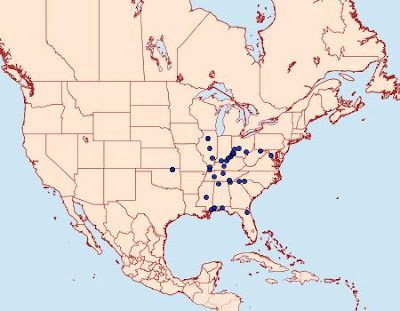I'm hard at work on a major moth project, and that has prompted me to go back and review my collection of "mystery moth" images. I have a digital stack of probably close to 500 photos dating back nearly a decade of moths that I never pinned names to. Not necessarily because I'm lazy, but because moth photography brings with it a set of challenges. One, there are thousands of moth species. Determining the identity of subjects can be incredibly time-consuming. This task is getting easier by the day, thanks to the ever-increasing utility of iNaturalist and various lep-ID apps such as LepSnap. Even with such help, in many cases it still requires delving into literature to sort out similar species and obtain independent verification.
Also, dedicated mothing excursions, where we are putting up lights and often attracting blizzards of moths, result in scores of photos. For the most part, it's like shooting fish in a barrel and I might return from such a foray with dozens or hundreds of photos of a great many species. Oftentimes, especially in the older days, I wouldn't have time to try identify all of them and would just toss them in the unidentified folder and basically forget about them. Now I am wading through all these mysteries and doing my best to put names to everything.
In the process, I have come across some interesting stuff. The Ornate Compacta Moth seems to be a rarity, and in Ohio there have only been a relative handful of records.
Here's the Ornate Compacta Moth distribution, as mapped by the uber-moth site the Moth Photographers Group.The host plant(s) for this species is unknown, which makes it pretty much impossible to figure out the moth's ecological role and habitat specifics. However, it is a member of the crambid family and some related species have an aquatic component to their larval phase. Maybe that's the case here. The moth in my photo was found near a high quality stream. Also, there is the possibility that this species is generally not attracted to lights and thus largely evades detection. However, it is a fairly large and extremely showy species, and if it was common one would think there would be many more records.

This species occurs in a very limited region of Indiana, Kentucky, and Ohio. Apparently the caterpillars feed on the roots of Ironweed, and presumably mostly or entirely Vernonia gigantea. Which makes me wonder why the moth is apparently so range-restricted as its host plant is abundant over a much broader range.
There is no shortage of mysteries in the moth world.



No comments:
Post a Comment